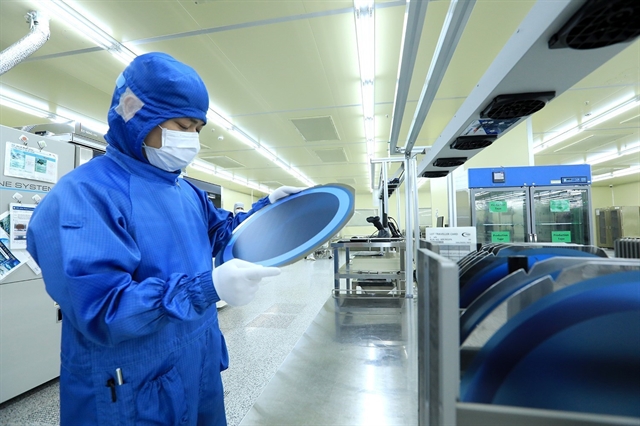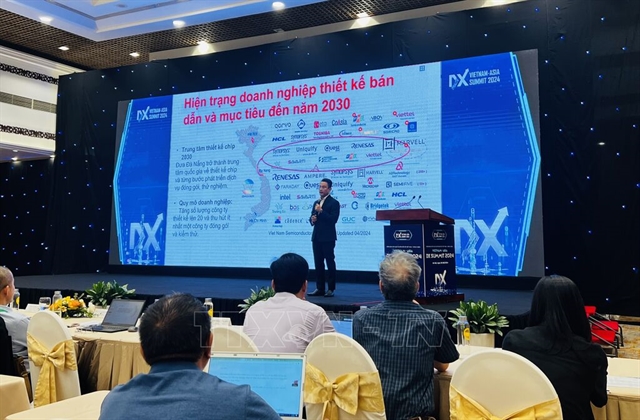 Economy
Economy

 |
| The conference in session. — VNA/VNS Photo Ngọc Bích |
HÀ NỘI — Representatives shared information about the global semiconductor market and the opportunities which could be seized, for Vietnamese businesses that have been, are and will be part of this commercial ecosystem during a conference on Wednesday in Hà Nội.
The conference 'Cooperation to develop the semiconductor industry' was within the framework of the Việt Nam-Asia Digital Transformation Summit 2024 (Việt Nam-Asia DX Summit 2024) organised by the Việt Nam Software and Information Technology Services Association (VINASA).
Trương Gia Bình, Chairman of the VINASA’s Founding Council, said that 25 years ago, Việt Nam joined the information technology software field from a position of zero.
But currently, he said, in the field of semiconductors, Việt Nam certainly did not start at zero, because the country already has many advantages in the field.
In the global technology world, a "semiconductor war" is taking place because the technology will dominate the future, he told the seminar.
India has the largest number of semiconductor chip design engineers, but 70 per cent of the world's chip sets are produced in China.
With the heat of the semiconductor product ecosystem, countries around the world are investing in this field.
“Therefore, Việt Nam needs to have a strategy and seize this opportunity,” said Bình.
Recently, the VINASA established the Semiconductor Industry Development Committee to steer experts, businesses and partners to come together in the industry through training, connecting and cooperating, creating incentives for domestic and international investors.
Nguyễn Thị Lệ Quyên, Deputy Director of the National Innovation Centre under the Ministry of Planning and Investment (MPI), said that worldwide, the chip market was maintaining a compound annual growth rate of 14 per cent and had been for the past 20 years.
It has the potential to become a trillion dollar industry by 2030.
It has been predicted that the workforce needed for the semiconductor sector will also increase every year, with China estimated to need 400,000 workers by 2030, while the US will need 67,000 and South Korea, Japan and India also have high demands personnel.
“Therefore, training and supply of human resources for the semiconductor industry in our country needs more attention,” she said.
The project 'Developing human resources in the semiconductor industry to 2030, with a vision to 2050', chaired by the MPI, forecasts the need for about 50,000 engineers in the semiconductor industry. Of the total, Việt Nam will need 15,000 chip design engineers and 35,000 engineers in manufacturing, packaging, testing and other fields.
Việt Nam needs to train 1,300 lecturers at research institutes, universities, training facilities and businesses and expand the education network to 200 facilities.
Nguyễn Thiện Nghĩa, Deputy Director of the Department of Information Technology Industry under the Ministry of Information and Communications, proposed solutions for semiconductor human resources.
“We should not only care about training, but will also need to attract businesses to invest in Việt Nam to push the domestic semiconductor market. Because, despite many advantages, Việt Nam's contribution in this field compared to the world is insignificant,” he said.
“Promoting the formation of a support ecosystem for chip manufacturing businesses will help the country increase its attractiveness to large manufacturing corporations, turning our country into the one with more semiconductor chip production activities,” said Nghĩa.
“Therefore, our country needs to address the shortcomings in policies to prioritise the semiconductor industry, speed up human resource training and further expand opportunities for cooperation and investment in the sector,” he said. — VNS




